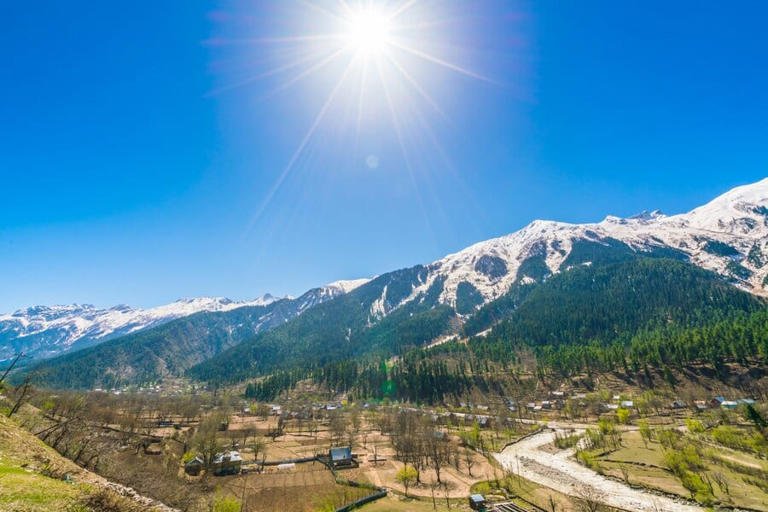Srinagar, April 30, 2025 – The Kashmir Valley is facing an unprecedented heatwave, with Pahalgam recording its hottest April day ever at 27.8°C, surpassing the previous record of 27.4°C set on April 28, 1979. Srinagar recorded 30.8°C, the second-highest April temperature in the city’s history, just below the 31.1°C record from April 20, 1946. These extreme temperatures, reported by the Meteorological Centre Srinagar, signal a significant shift from the region’s typically cool spring climate.
The heatwave has raised alarm among residents and experts, with social media posts amplifying the news, noting Pahalgam’s record-breaking 27.8°C and Srinagar’s 30.8°C. The soaring temperatures stem from a prolonged dry spell and changing weather patterns in Jammu and Kashmir, raising concerns about impacts on tourism, agriculture, and water resources.
Pahalgam, a popular tourist destination known for its serene meadows and cool climate, has seen an unusual temperature surge, prompting visitors to adapt to the unexpected heat. In Srinagar, the 30.8°C high has disrupted daily life, with locals reporting discomfort and increased demand for cooling measures. The Meteorological Centre Srinagar warned that the heatwave may persist, urging residents to stay hydrated and avoid prolonged sun exposure.
Climate experts attribute these record-breaking temperatures to global warming. “The Kashmir Valley is witnessing a clear shift in weather patterns, with rising temperatures becoming more frequent,” said a senior meteorologist. The region’s glaciers, vital for water supply, are at risk, potentially affecting the Jhelum River and local agriculture.
As Jammu and Kashmir brace for more warm days, authorities are closely monitoring the situation. The heatwave coincides with heightened security concerns following a recent terror attack in Pahalgam, compounding the region’s challenges. Residents and tourists are urged to take precautions as Kashmir navigates this historic weather event.




